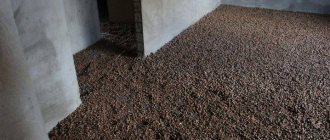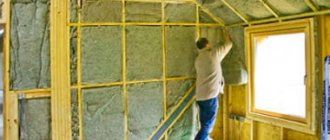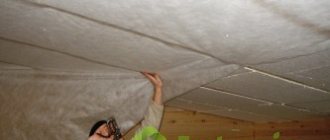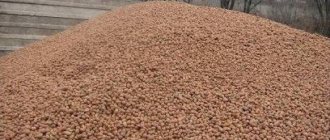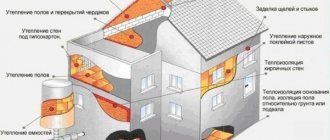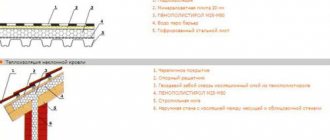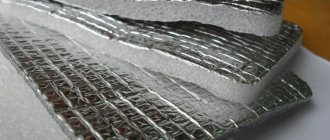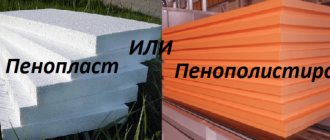Expanded clay production and composition
Composition of expanded clay
The main material from which construction expanded clay is made is sedimentary clay rocks . The composition of clayey rocks is quite diverse and includes not only ordinary clay, but various impurities: quartz up to 30%, organic compounds, feldspar, carbonates and a small amount of compounds of various kinds of metals. The composition of expanded clay depends on the characteristics of a particular area where the extraction of raw materials for production was carried out.
In addition to the components originally contained in the raw material, to achieve the swelling effect, artificial impurities and organic compounds (solar and oil) can be added to the composition at the production stage.
Production of expanded clay
It depends on the composition of natural raw materials and is carried out in three main ways:
- Dry production method
It is used for the production of expanded clay from the most homogeneous clay rock, with a minimum amount of impurities present. The extracted homogeneous rock is crushed and sent for roasting. It is considered the simplest and cheapest method of producing expanded clay.
- Wet production method
With this method, clay rock is mixed with water and additional impurities that are necessary to obtain certain properties of expanded clay. This mixture is fed into a rotary kiln, where it clumps naturally and is dried under the influence of furnace gases.
This method is effective when using wet clay rock and the need for additional inclusions in the material.
furnace for the production of expanded clay
- Plastic production method
The most expensive method by which a material with improved technical characteristics is created. In this case, we also use moistening of the raw materials and the addition of additional impurities to achieve a homogeneous mass. But unlike dry production, granules of approximately the same shape are formed from the resulting mixture on a belt press, which are fed into an oven for firing and drying. Thus, a solid expanded clay of uniform shape is obtained, with all the properties of a brick. However, unlike brick, it has greater thermal efficiency due to porosity and is significantly lighter in weight . Read more about the properties of brick.
What is expanded clay
Expanded clay
It is not suitable for insects and rodents, as is any stone. But at the same time, unlike ordinary, “classic” stones, it has extremely light weight. Although, when compared with alternative insulation options, for example, with polystyrene foam or mineral wool, expanded clay is still heavy.

In general, it has all the characteristic qualities of a stone. The material is durable, does not release any substances into the environment that could be harmful to health, in addition, it does not burn at all, so this insulation option is also a reasonable solution from a fire safety point of view. Now we can talk about its advantages and disadvantages (even expanded clay has them!), in more detail.
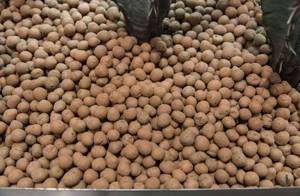
Negative consequences of using wet expanded clay
Expanded clay can retain heat and fulfill its intended purpose in two cases - if it is solid, the granules are not cracked, and if it is not wet. If the material has already absorbed moisture, it cannot part with it - mold will begin to develop under such a heat insulator, and this will quickly spread to the concrete base, and then to the floors. It will be impossible to get rid of fungus and mold in the house, because the source is located inside the floor.
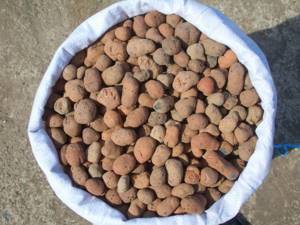
In order for the use of expanded clay to be effective and justified, you need to follow these rules:
- Never use it as a component for wet screed or concrete mix. Expanded clay is used exclusively in dry form, poured onto dried surfaces;
- You should not use it to insulate the first floors, where there is constant contact with water. It is permissible to insulate the first floor with expanded clay if excellent thermal insulation is provided;
- If the granules are damaged, cracked or broken, they must be excluded from the total mass. Such granules will draw out all the moisture and begin to collapse;
- If the insulation gets slightly wet, be sure to dry it and only then use it for its intended purpose. When drying the expanded clay, you need to scatter it on the floor and point the heat gun;
- If the expanded clay gets wet after it has been laid, you need to call specialists, because you can’t dry the insulation yourself.

Today on the market there is a more versatile expanded clay, which during the production process is covered with an additional film - it protects against excess moisture absorption. It is better to use this type in insulation activities. Incorrect use of the material will lead to complete disappointment and will require rework, and this is a huge expense.
( 1 rating, average 5 out of 5 )
How to insulate an attic floor with expanded clay
The technology depends on the overlap device. Expanded clay can be used on concrete surfaces and on beams. Insulation of suspended ceilings and other types of weak floors is not performed with granules.
On a concrete floor, it is optimal to lay expanded clay under the screed
To insulate attic floor slabs with expanded clay, the concrete surface is covered with waterproofing bitumen mastic. Beacons are installed along it, making it possible to maintain the same thickness of the backfill. If the attic will not be walked on or used for storing things, it is enough to cover the insulation on top with film. The joints of the sheets are sealed with tape.
More reliable insulation will be obtained with a screed. The granules are filled with cement laitance. The attic is dried for at least a week, creating a good draft. A reinforcing metal mesh is laid on the insulation and filled with a concrete screed about 4 cm thick. You can move on such a surface and use the attic as a storage area for equipment.
On a wooden floor, backfilling is carried out between the beams
To insulate an attic with expanded clay for a wooden floor, a vapor barrier is laid over the beams. On the room side, the ceiling should be lined with a solid board. She will play the role of the subfloor. Expanded clay is poured between the joists. The top of the insulation is covered with a vapor barrier. If the attic is to be used, after insulation, plank flooring is laid over the beams.
Main types of expanded clay
Classification of expanded clay is carried out, first of all, by the size of its fractions. The material is divided into the following groups:
- 5-10 millimeters
. It is used for floor screed equipment, as well as for the production of expanded clay concrete blocks. - 10-20 millimeters
. Used for thermal insulation of interfloor ceilings and floors. - 20-40 millimeters
. This type of expanded clay is used to insulate roofs, basements, heating mains, and floors in garages.
It is worth noting that if you use the last two types of expanded clay for installation under the screed, this will significantly increase its thickness.
In addition, there are several varieties of this material depending on the structure and shape.
- Expanded clay gravel
. It has the shape of rounded grains with a porous structure. The size can range from 5 to 40 millimeters. - Expanded clay sand
. It is obtained by grinding large fractions of expanded clay or by firing the remains of clay that was used to produce gravel. Sand has a particle size of no more than five millimeters. It can be used to insulate floors and interior partitions. It is also used for the production of ultra-light concrete and as a filler for cement mortar. - Crushed stone
. This material has an arbitrary shape (usually angular). Its dimensions are approximately the same as gravel. Expanded clay crushed stone is made by grinding large pieces of the substance. It is commonly used as a filler for lightweight concrete.
In addition, there are about a dozen brands of expanded clay on the construction market. Classification is made according to bulk density (from 250 to 800). Depending on the size and shape of the fractions, it is determined in special measuring containers. Larger granules have the lowest bulk density.
Brands 700 and 800 cannot be found on the open market. As a rule, they are produced on an individual order, since they are not widely used.
Material characteristics
Expanded clay is light brown granules of various sizes. It is made by firing red clay at 1300°C. At this temperature it foams and forms separate fractions that have excellent insulating properties. They are explained by the presence of a porous structure that prevents heat loss.
[author_iframe width=740 height=500 url=https://www.youtube.com/embed/ApAHD5h34Qc]
Types of material
There are three varieties:
- Gravel is oval grains with dimensions of 5-40 mm. Suitable for laying layers with a thickness of five centimeters or more. More often than others it is used to insulate buildings.
- Crushed stone is cubic in shape, with fractions up to 4 cm in volume. It is obtained by crushing large pieces.
- Sand - has a smaller size and is suitable for arranging thin layers of embankment, up to 5 centimeters high. Can be used in conjunction with other varieties.
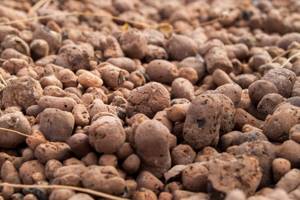
The nuances of roof insulation with expanded clay
Since the material comes in different sizes, it is advisable to use several types of it at once when backfilling. This will allow you to create a denser layer and not be afraid that it will not withstand the planned load.
During repairs, expanded clay backfill can be hidden either by wood panels, sand concrete, or cement, forming a smooth surface suitable for further finishing.
Application of expanded clay in construction
Expanded clay is a universal material. It is widely used not only in the construction of buildings, but also in the construction of infrastructure: roads and highways, in agriculture, and gardening.
Let's consider the benefits of expanded clay for construction:
- Highly efficient insulation. The porosity of the material makes it a good insulator, therefore expanded clay is used to insulate the walls of a house from the outside by filling the space between the main, load-bearing wall and the facing layer of brick or other material. In the same way, the ceiling is insulated by laying a layer on the attic floor and the floor, creating a crimson layer between the cement screed and the subfloor. Also used as an insulating fill under wooden flooring.
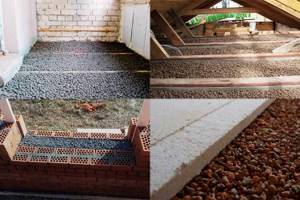
Expanded clay can be used to insulate walls, floors and roofs - Production of expanded clay concrete building blocks. Expanded clay is the main material for the production of such a unique, highly efficient and environmentally friendly material for building houses as expanded clay concrete blocks. Read more about the properties of expanded clay concrete.
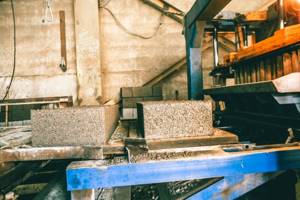
production of expanded clay blocks - Good substrate for many substrates. It is used as a substrate for a system - warm floor, for pouring insulated floor screed; the use of expanded clay eliminates the need to lay a deep foundation that will not freeze.
- Insulation for heating systems. Due to its low thermal conductivity, expanded clay mound maintains a stable temperature in plumbing systems and contributes to a systematic decrease or increase in temperature in them, with a sharp change in temperature.
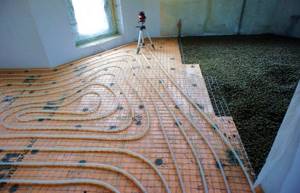
- Used to level floors. Thanks to the light weight of expanded clay, it is possible to level out large differences in the plane of the flooring without creating additional weight load on the foundation. 5-10 cm of crushed stone or clean concrete screed is much heavier than the same layer of expanded clay.
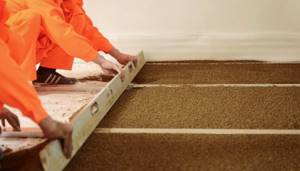
Features of attic insulation with expanded clay
High humidity in the room, mold on the ceiling and walls, cold - this is what awaits a careless owner if the ceiling is left without thermal insulation. All heat from the room will escape through the roof, heating the surrounding space. The problem can be solved with the help of expanded clay - a loose mass made from clay rocks. In the attic you can use granules of the following fractions: sand - particle sizes 5-10 mm; gravel - 10-20 mm; crushed stone - 20-40 mm. Before insulating the attic with expanded clay, fragments of different sizes are mixed, which allows you to fill all the voids. The product is poured only onto the ceiling. The loose mass is considered a universal product and is capable of insulating all types of floors. A limitation may be the load-bearing capacity of the structure. The material is quite light, but with a large layer thickness, a large load will be exerted on the joists and walls. The roof of the upper floor is covered from the inside with other means. The work is easiest to carry out at the stage of building a house. In this case, you can easily waterproof the ceilings of the rooms under the attic and install a ventilation system. In this way, expanded clay is protected from moist air from living quarters, and the ceiling is protected from the appearance of mold and mildew. If insulation is carried out in a residential building, the attic floor must be covered with a vapor barrier film to prevent the loose mass from getting wet. It is not recommended to pour expanded clay directly for another reason. When working with it, a lot of dust is released. In addition, it is formed during operation. An additional layer between the ceiling and the granules will protect the lower rooms from the penetration of crushed fragments. When determining the thickness of the layer, you can rely on the following comparisons: 10 cm of a substance retains heat, like 25 cm of wood or 60 cm of brickwork 1 m thick.
Advantages
This type of insulation materials not only has a fairly competitive price compared to other types of insulation materials. It also has other useful qualities:
- It doesn't burn
- Rodents and other pests do not eat clay, and therefore do not like this insulation
- It's good as a sound insulator
- Ease of installation is another plus
- Excellent heat retention in the room
- Tolerates temperature fluctuations well
- Very inexpensive
- Weighs a little
Of the negative aspects, we can only remember the need to pour it in a thick enough layer to obtain a good heat saving coefficient.
Also, to increase service life and maintain thermal insulation qualities, it is necessary to prevent wetting and moisture from entering the thermal insulation pad. To do this, a vapor barrier membrane is spread under the insulating cushion, and on top it is covered with waterproofing.
Why expanded clay is better than other insulation materials
Expanded clay insulation is a lightweight porous material in the form of round granules. It contains only baked clay, so this material is environmentally friendly.
There are several types of expanded clay:
- expanded clay gravel – grains 5-40 mm in size. It is used in insulation of ceilings, walls, floors. Also used in concrete production;
- expanded clay sand – grains 0.14-5 mm in size. Filler for concrete and mortars. It is used for thermal insulation fills with insulation thickness up to 50 mm.
How to choose the right insulation? Compared to other materials, expanded clay has a number of advantages:
Why is wet expanded clay dangerous?
Under the influence of moisture, the structure of the material begins to collapse and loses its basic thermal conductivity properties. Wet expanded clay is difficult to dry, so it is important to take care of reliable waterproofing during repairs.

If moisture gets on the insulation, it can lead to the formation of mold, which spreads along the surface of the ceilings, walls and floors.
As you know, fungus is difficult to deal with; subsequently, you may need to change floor coverings and wallpaper. Moreover, the development of fungus and mold is dangerous to health.
Advice! Expanded clay should not be added to wet screed and concrete. It is used only in dry form! The double waterproofing method will increase the effectiveness of protecting the insulation from moisture.
Laying features
Beginners are often lost in the question of what layer of expanded clay gravel is required to reliably insulate walls and ceilings, and what additional elements are needed to create a heat-insulating “cushion.”
It is recommended to pour a thick layer of large expanded clay for complete insulation, but taking into account the total load on the ceiling. In cold regions, the height of the buried gravel reaches half a meter, and, despite the insignificant mass of the granules, the insulation makes the structure heavier.
Gravel sand is poured under the main layer, and in addition, two types of insulation are laid under the bulk material and on top of it: steam and hydro. To reduce the cost of the project, polyethylene or roofing felt is used, but the vapor barrier is broken, since the film creates a greenhouse effect, and condensation accumulates if the room is poorly ventilated.
When planning to pour only one fraction, spread the membrane fabric, choose which optimal layer is needed, and scatter the expanded clay to the height required for insulation, evenly distributing it over the surface of the ceiling.
To enhance the insulation and sound insulation of a wooden or concrete ceiling, the material is compacted by mixing sand with expanded clay.
The same effect is achieved by combining gravel with smaller granules. You can increase the heat saving rate by filling the granular insulation with concrete. In this case, there is no need to place a vapor barrier under the screed.
Professionals do not recommend insulating the top floor if it is the ceiling of a flat roof without an attic. This applies to both bathhouses and residential buildings. Expanded clay is highly hygroscopic, which negatively affects the thermal insulation properties of granules.
Whatever fraction of clay expanded clay you take, during work and use as insulation the material emits dust, and therefore for a plank ceiling an additional layer to contain dust is required.
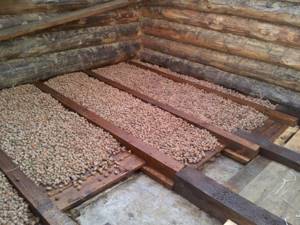
The optimal thickness is 10 cm, a thinner layer of expanded clay is ineffective for insulation, and in regions with low temperatures, the height of the embankment starts from 20-40 cm, subject to the appropriate ceiling height or the possibility of its reconstruction.
The different size fraction and lightness of expanded clay allows you to create an effective heat-saving “cushion”. All insulation work is simple and it is possible to install the ceiling yourself, without special construction experience. Consumers are also attracted by the low cost of the material, the lack of special equipment for installation, and the effectiveness.
Negative aspects of expanded clay as insulation
*
Of course, expanded clay is a very good insulation material, but it also has its minor disadvantages.
- You should not use expanded clay to insulate a house if the layer thickness does not reach at least 30 cm.
- If moisture gets in, you will have to completely change the insulation
- Best used on top of reinforced concrete structures. Because the filler crumbles a lot and can seep through the coating.
- To insulate a wood ceiling, it is worth protecting the material from steam.
- Expanded clay, consisting of small fractions, cannot be poured onto a surface that is reinforced with beams from below. Since due to the heavy weight the material can break the ceiling.
How to construct ceiling insulation based on expanded clay
The first question that needs to be resolved before starting work is what layer of expanded clay is needed to insulate the ceiling. The material is inexpensive, but it’s still better to avoid unnecessary expenses. In theory, the thickness of the expanded clay layer for ceiling insulation can be calculated using the recommendations of SNiP No. P-3-79. To obtain high quality thermal insulation with a heat transfer resistance coefficient of 3.5-4 m2*C/W, it is enough to lay a layer 12-15 cm thick. To insulate the ceiling with expanded clay in a private house with an area of 80-100 m2, you will need to buy at least 4 cubic meters of sand and 10 cubes of dry backfill. Until work is completed, the material is stored in a dry, ventilated area.
In addition, before insulating the ceiling with expanded clay in a private house, you will need to stock up on consumables:
- Glassine or vapor barrier membrane per 10 m2 of ceiling 15 linear meters of roll insulation;
- Scotch tape for sealing joints;
- Stapler with a set of staples;
- Polyurethane foam and tape measure.
If the work of filling expanded clay is planned to be carried out in an already built attic, then you will additionally need to prepare a rule, a lantern and several boards on which you can move without breaking the ceiling insulation.
Preparing for laying expanded clay
First of all, it is necessary to remove from the ceiling the old insulation and the remains of roofing material, which is traditionally used to underlay fiber thermal insulation. Usually it is glass wool, stone fiber.
The exposed surface of the rough ceiling is subjected to a thorough revision. In half the cases, it is possible to find places on the ceiling where thermal insulation did not exist at all. It is necessary to open the insulation so that the wood dries to its natural moisture content. All holes and cracks between the walls and ceiling boards are filled with foam, and if necessary, repair patches and bars are laid.

Installing patches is not necessary to combat leaks or water vapor penetrating through holes in the ceiling. This is not required; the insulation lining successfully blocks most of the fumes without patches. Repair of cracks and joints along the perimeter of the walls is necessary to ensure that small fractions of expanded clay do not spill out and reach the finished ceiling of the floor.
Laying vapor barrier on boards
As a vapor barrier, you can use parchment, vapor barrier, membranes, or any type of film insulation that can block the seepage of water vapor into the thickness of expanded clay insulation.
If the distance between the load-bearing beams is small, then the sheets can be cut separately for each span and the material can be laid in a boat, that is, with the side edges bent onto the walls of the beams by 2-3 cm. More is not required, since the sheet is laid to block spillage of expanded clay under isolation.
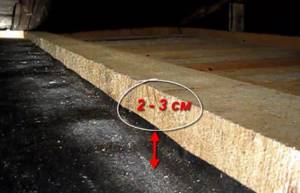
The edges are fixed with a stapler, while to fix the parchment on the boards of the rough ceiling, you need to use staples with long “legs”; any others are squeezed out of the wood due to the deflections of the sheathing.
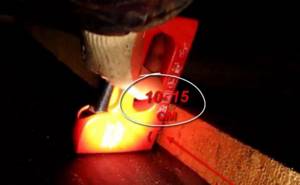
In the event that there is more than 120 cm between the beams, the ceiling insulation is laid from two sheets with an overlap of 15-20 cm and the sheet must be taped with tape.
If it is necessary to install insulation on a concrete slab ceiling, then instead of film you can use an acrylic primer.
Filling the ceiling with expanded clay
The material is laid out on the surface of the ceiling in small portions. To simplify and make work easier, expanded clay is lifted to the ceiling in bags of 20-30 kg, no more, although in standard containers it can be more, up to 40-50 kg.
Backfilling of insulation begins from the far edges, filling all gaps and cavities with granulate. Due to the fact that the ceiling surface may differ from a perfectly flat plane, especially around the perimeter of the ceiling, it is quite difficult to accurately calculate the required amount of material. On average, it is believed that 1 m2 of insulated area will require a bag or 50 kg of bedding.
For arranging insulation, two types of expanded clay are used. The first layer, 3 cm thick, is covered with a fine fraction, up to 2-3 mm, the rest of the space is filled with dry bedding. This is a larger expanded clay, up to 2 cm in diameter. This device ensures trouble-free removal of residual moisture from the insulation layer.
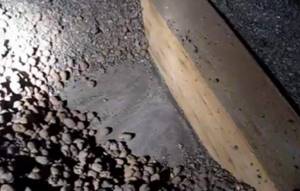
At this stage, all the necessary communications, from wiring to telephone cables, can be laid in the thickness of the backfill. At the same time, the shell of baked clay serves as an excellent protection and thermal insulator.
At the final stage, the surface of the dry bedding is leveled using the rule. If a wooden floor is planned for the ceiling, then a layer of expanded clay is poured 1-1.5 cm below the upper edge of the support beams. This will avoid dust and creaking floorboards. Bulk insulation is covered with agrotextiles and sewn up with a floorboard.
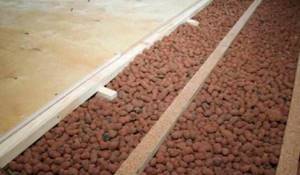
Properties and advantages of expanded clay in construction
- A light weight. Depending on the raw materials, impurities and fractions, the weight of expanded clay per cubic meter can vary from 250 to 1000 kg.
- High strength. The production method and raw materials from which expanded clay is produced are almost identical to the production of brick, and therefore the strength of expanded clay is comparable to the strength of brick. The less porous the expanded clay granules, the more durable it is.
- Fireproof. Expanded clay is a fraction of artificial stone, the production of which is carried out by firing under high temperatures. Expanded clay does not burn and does not support fire and is completely fireproof.
- Water resistance. Expanded clay is a porous material and its water resistance depends on the method of its production. Burnt expanded clay granules, with closed pores, are waterproof and even float in water for a long time, practically do not absorb liquid. The water absorption of such expanded clay is 8-10%. Expanded clay with open pores, produced by the dry method, has open pores and absorbs moisture well. Its water absorption can be up to 20%.
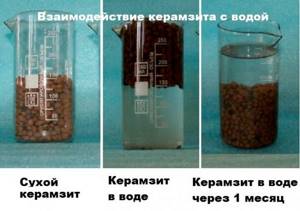
water resistance is maintained only with high-quality material - Thermal conductivity and frost resistance. According to this indicator, expanded clay is at a high level, and its thermal conductivity is inversely proportional to its porosity. High porosity ensures good heat retention. That is why one of the main purposes of expanded clay in construction is to insulate walls, floors and ceilings. Of course, to achieve the same effect, the expanded clay layer must be thicker than the mineral wool layer. But in this case, expanded clay wins due to its durability, strength and a number of other indicators. At the same time, a 10 cm layer of expanded clay is equivalent in thermal conductivity to a 50 cm brick wall and a 25 cm thick wall made of natural wood.
- Soundproofing. Expanded clay has good performance as a soundproofing material. Absorbs sounds well and suppresses noise from the street and between floors. Effectively solves the problem of loud neighbors and disgruntled downstairs neighbors.
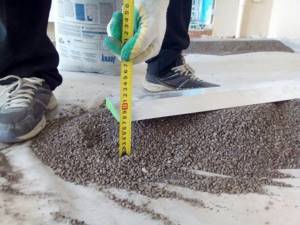
the expanded clay layer should be at least 10-15 cm - Durability. The correct combination with other materials and adherence to expanded clay installation technology will ensure its functionality and integrity for many decades. Since it is not directly exposed to the environment, the durability of expanded clay can reach 100 years.
- Chemical and biological stability. Does not react chemically with most chemical compounds, acids, alkalis and others. Expanded clay does not create conditions for the growth of mold and mildew.
- Not interesting to rodents and insects. Due to the flowability of expanded clay, rodents and insects cannot create homes for themselves in this material. Possible nests or burrows of rodents are simply self-filled with expanded clay at the equipment stage. Therefore, even a rodent that accidentally runs in will leave the walls and roof of your house.

Expanded clay does not harbor mice, unlike other types of insulation - Eco-friendly material. The use of natural materials - clay, guarantees the safety of expanded clay for health. Does not accumulate harmful substances, odors and background radiation. In the European region, houses made of expanded clay concrete are analogous to a healthy and environmentally friendly home.
Pros and cons, material characteristics
Expanded clay is a loose type of insulation. It is produced by firing low-melting clays or shale in a rotating drum. At the exit from the furnace, several fractions of ceramic pellets are obtained.
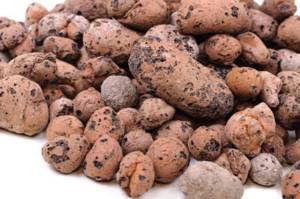
Types of expanded clay.
Depending on the size and shape of the granules, expanded clay is divided into:
- sand - grain diameter does not exceed 5 mm;
- gravel (not to be confused with quarry gravel) - round granules from 0.5 to 4 cm;
- crushed stone - irregularly shaped pellets measuring 5-10 mm.
In turn, gravel is divided into fractions:
- fine - granule size 5-10 mm;
- average - 10-20 mm;
- large - 20-40 mm.
Advantages and disadvantages
The steady popularity of expanded clay among consumers is explained by its many advantages. Among the advantages:
- relatively low price per m3;
- long service life - 40-60 years;
- fire resistance (class NG);
- resistance to temperature changes;
- high frost resistance;
- light weight of granules;
- Possibility of use in cement mortars;
- environmental Safety;
- biological resistance - does not serve as a basis for the proliferation of fungus and mold;
- is not a rodent habitat;
- simple and convenient installation - all work can be done with your own hands.
The disadvantages include:
- high level of water absorption - 15-25% of weight;
- large thickness of the thermal insulation layer;
- dust formation during insulation work.
When insulating the ceiling with expanded clay, the pros and cons require additional comments and explanations. All this was done in the work “Expanded clay as insulation.”
Characteristics of expanded clay
The physical and technical characteristics of expanded clay depend on the size of the granules. Moreover, they differ greatly from each other in different sources, which is caused by the measurement technique and the type of expanded clay taken for analysis: immediately after firing (absolutely dry) or lying in a warehouse for some time (absorbing moisture from the air). Average data can be viewed here.
Table 1, for comparison purposes, shows the results of testing expanded clay granules of the JSC Expanded Clay Gravel Plant Novolukoml immediately after firing.
Table 1.
IndicatorsGranule size10-20 mm5-10 mm0.5 mm
| Density, kg/m3 | 289-370 | 300-400 | 500-700 |
| Compressive strength mPa | 1,0-1,8 | 1,2-2,0 | 3,0-4,0 |
| Number of granules with a different size, % | 4 | 8 | |
| Weight loss after 20 freezing cycles, % | 0,4-2,0 | 0,2-1,2 | Not regulated |
| Percentage of crushed granules, % | 3-10 | 3-10 | No |
| Thermal conductivity, W/(m×°K). | 0.0912 | 0.0912 | 0.11 |
Advantages of expanded clay

This insulation has been used for many years and does not lose popularity, since in terms of price-quality ratio it is difficult to find equals. Let's consider the main advantages of expanded clay:
- Excellent thermal insulation properties
. Clay belongs to the category of “warm” natural materials, and due to the presence of air in the structure of expanded clay granules, thermal conductivity is reduced. This heat insulator is capable of retaining up to 80% of heat loss. - Lightweight expanded clay
. The material is 10 times lighter than concrete. Among insulation materials, only foamed polymers have less weight. Therefore, it will not exert too much load on the floors, foundation, or roof. - Relatively low price
. Expanded clay is cheaper than many other insulation materials. And its installation does not require special tools or a team of professional builders. All work can be done independently. - Environmental friendliness
. Expanded clay is an absolutely natural insulation material. It is recommended for use in residential buildings built using “green house” or “eco-house” technology. - Non-flammability
. The material does not burn, does not support combustion and does not emit toxic smoke when exposed to an open fire source. It is absolutely fireproof. - Easy to install
. Even a beginner can make an expanded clay mound. And since the heat insulator is relatively light, it is quite possible to handle it alone. - Long service life
. Expanded clay can be used as insulation for a very long time (100 years or more), but only if it is installed correctly.
The main stages of roof insulation with expanded clay

The thickness of the layer for insulation with expanded clay should be on average 25 centimeters. Carefully and in the required quantity is poured onto a layer of vapor barrier film. If you want to enhance sound insulation, you should make the layer even thicker
It is important to know that when increasing the layer, it is necessary to calculate the load on the floor. In this case, it is better to comply with the given norms. To eliminate voids between the granules, the layer must be well leveled, followed by careful compaction
You can do this work with a special machine, but if you don’t have one, you’ll have to do it by hand. For better rigidity, you can fill the screed. This method perfectly levels the surface and adds strength throughout the entire layer. Several channels should be made between the inner and outer layers. Then excess moisture will be removed and air circulation will be available. Then roofing material is spread over the insulation layer, always overlapping and without gaps. Glue the seams with bitumen mastic. At the last stage, tiles or tiles are laid.
Technology of wall insulation with expanded clay
Insulating the walls of a private house with expanded clay involves the use of a three-layer rigid wall structure or an insulating backfill made in the cavity of the brick masonry. The three-layer construction consists of the following layers:
- wall made of expanded clay concrete blocks;
- a mixture of cement and insulation;
- internal decorative protection.
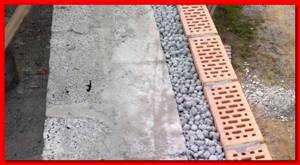
The insulating backfill is carried out in three layers:
- well;
- with horizontal three-row diaphragms;
- with embedded parts.
Laying features
There are three different ways to apply granular insulation.
The dry method is preferable in wooden houses. Gravel is mixed with expanded clay sand and poured into the spaces between the joists. Thanks to particles of different sizes, the space is filled as tightly as possible. The absence of gaps guarantees reliable insulation. The dry method is the fastest. It can be done by people without experience and does not require large expenses.
The wet method is a screed of three components. Two parts sand are mixed with one part cement and three parts expanded clay. The mixture is mixed well with water and the resulting solution is poured onto the floor. The presence of porous balls in the screed provides floor insulation.
A similar technology is used in utility rooms: garages, workshops, sheds. The method is labor-intensive and more expensive than the dry method.
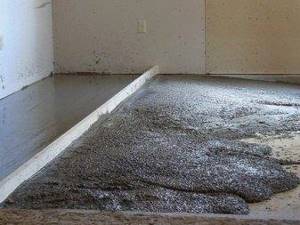
With the combined method, dry granules are only filled with cement mortar on top. This results in a smooth, hard surface. After drying, a full screed is made.

In order to insulate a foundation, floor, ceiling or ceiling using expanded clay, similar technologies are used. First, the area on which it is planned to pour expanded clay is leveled. Then waterproofing is laid, this can be polyethylene film or other rolled material that does not allow moisture to pass through. In order for the waterproofing coating to become solid, the joints are carefully taped.
The thickness of the thermal insulation layer depends on the floor design. The thicker the layer, the better the insulation and the more heat remains in the room. Sometimes the height of the backfill is limited by the size of the logs, sometimes it depends on the existing doorway, when an extra centimeter becomes an obstacle to the door.
In large areas it is difficult to ensure uniform laying of expanded clay. The problem is solved by installing wooden blocks or joists. The logs are leveled in the horizontal plane. Then waterproofing is laid. Granules are poured onto it. The level is used again, but now for the correct distribution of the bulk product along the horizon. If expanded clay goes under a screed, the top layer is filled with cement mortar. With the dry installation method, a vapor barrier, such as parchment, is laid on top.
In order to insulate the chimney, you will have to build a casing that matches the shape of the pipe. Below there should be a dense non-combustible material, for example, an asbestos-cement sheet. Expanded clay is loaded into the space between the chimney pipe. The upper part of the casing is closed with a lid made of the same material as the casing itself.

Is it possible to dry expanded clay?
If the bulk insulation gets wet during repairs, you can try to dry it. Wet granules are poured onto the floor in the room, a heat gun is installed and the heat insulating fractions are periodically mixed. The room where the drying takes place is ventilated so that the moisture evaporates faster.
If it is necessary to quickly dry a small amount of fractions, they are poured into a concrete mixer and a heater is directed into it. Dry air hits the material, and the concrete mixer mixes the granules at this time.
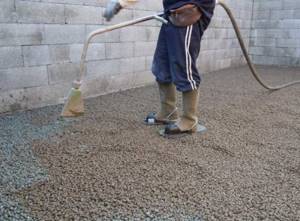
Drying of already laid insulation is carried out using special equipment. In several places on the insulated surface, holes are made into which pipes are installed to allow vapors to escape. But this drying method is expensive and requires calling specialists.
Advice! It is better to purchase expanded clay made using new technology. Its special advantage is the additional protection of fractions that are covered with a thin film. It additionally protects the granules from getting wet.
What needs to be done for high-quality ceiling insulation?
Insulating the ceiling in a dacha with expanded clay is a very simple technology; it includes two components: laying a vapor barrier and directly laying the expanded clay.
Preparatory stage for the start of work
If the thermal insulation material is laid on a reinforced concrete ceiling, then the preparatory work should include sweeping the floor. Then everything is simple: different fractions are scattered on the floor and leveled with special or improvised devices.
If the base is wood, then serious preparatory work should be done. The old coating is removed, if any. The floor is carefully swept to remove dust and washed to remove old whitewash.
Otherwise, problems will arise when the ceiling has been painted. It is necessary to remove the old layer of paint. It can be removed with a hammer drill or sanded until the floor is level. The cleaned surface must be treated with a primer solution. Processing is carried out to strengthen future layers.
After cleaning the surface, you can begin priming. Begin soil treatment from the corner to the center. Apply in small quantities, in an even layer. Afterwards, the ceiling is allowed to dry for two days.
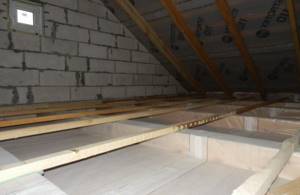
Surface prepared for laying expanded clay
The main article about floor insulation with expanded clay.
Main stage. Installation
*
A vapor barrier is laid on the prepared floor. But no one lays it on a bare surface; first you need to put a vapor barrier. The film is placed on the floor in one layer and nailed down.
Note! The choice of vapor barrier depends on the room itself: whether it has natural ventilation or not.
For the frame you will need any wood that can withstand the humidity in the area being developed. Wooden logs are laid across the room, and smaller beams are laid lengthwise.
After laying the frame and securing the film, you can fill the resulting voids with expanded clay. It is easiest to use the same size litter.
If you use expanded clay of different fractions, then first fill it with small ones, in a layer of up to 40 cm. A thin layer of coarser expanded clay sand is poured on top.
Briefly about the main thing
Expanded clay is an excellent thermal insulation material created exclusively from natural raw materials. It does not burn, does not rot, and does not emit harmful substances, so it is ideal for insulating a house, and especially the floor of the first floor. Rodents will not grow in it, and provided it is well waterproofed, it will not lose its heat-saving properties and will last the entire life of the house without requiring replacement.
This insulation can be used both in the form of loose granules and as part of concrete for leveling floor screed.
Read later
We will send the material by email
Insulation materials
In general, the floor in a bathhouse can be insulated with any insulation material. There are rooms with different operating modes and the floor structure may be different. Let's look at the most common materials that can be used to insulate a bath.
Foam glass (foam glass). Not to say that it is widespread, but it is an ideal option in all respects for any room. Foam glass does not get wet, is not afraid of moisture, frost, can withstand temperatures up to 100°C without problems, does not emit anything, does not burn, does not support combustion. It, like ordinary glass, melts at a very high temperature and does not emit anything. It has very good thermal insulation characteristics; a small layer is needed to achieve the required degree of protection. The material has low vapor permeability and this must be kept in mind when choosing a floor design. There is only one drawback - the price. Foam glass comes in the form of blocks, granules, and you can also find scraps. The most expensive blocks are (about $350 per cube), the cheapest are scraps (about $40 per cube). Blocks can be placed between the logs, granules and trimmings can be used as backfill. This is a much more effective (but also more expensive) replacement for expanded clay. New technologies bring new materials. For example, foam glass is almost ideal as insulation
Expanded polystyrene (not foam). The best option is extruded polystyrene foam. It can be placed in the screed or between the joists. It has excellent thermal insulation properties and does not absorb water (or rather, it does, but in a very small amount). Up to a temperature of 95°C it is environmentally safe, but above that it begins to release not the most beneficial substances. In relation to floor insulation in a bathhouse, it can be installed in any room. The floor is not walls and it simply has no chance of heating above 40°C. But polystyrene foam is flammable and vapor-proof. That is, good ventilation is needed. How to insulate floors in a bathhouse and with what depends on how you are going to make them
Mineral wool. Stone wool can only be used in dry rooms. She will work great here. It is better to insulate the floor in a bathhouse using a different material. If you want mineral wool, look at glass wool. The humidity in the bathhouse is still high. If wet stone wool freezes, it does not restore its properties after freezing, but immediately loses them by 40%. So after two frosts there will be nothing left. Just trash that doesn't affect anything at all
Glass wool is very itchy, but is not afraid of moisture, which is very important in a bathhouse
Working with glass wool is difficult and difficult. It pricks even through overalls. But she is not afraid of getting wet. It also slightly reduces its properties when wet, but after drying the characteristics remain almost unchanged.
We suggest you read: How to rejuvenate your skin in a bathhouse From old memory, many still remember such insulation as expanded clay. Until there was an alternative, it could still be considered insulation. Now, to replace a layer of mineral wool with a thickness of, for example, 8 cm, you need to pour 40 cm of expanded clay. Yes, it is cheap, but it is afraid of water, which makes it completely unattractive.
Disadvantages of expanded clay in construction
- High water absorption of some types of expanded clay.
Expanded clay made by dry crushing, the pores of which are open, absorbs moisture and liquid well. This material can be distinguished by its rough surface with visible and open pores. Quickly absorbs and releases moisture for a long time. In this case, the properties of the material as insulation are lost. Such expanded clay, nevertheless, can be used as insulation, but for this it is necessary to provide a moisture-proof and vapor-proof layer. - Eats up space. For effective thermal insulation and sound insulation, it is necessary to lay a layer of expanded clay of at least 10 to 15 cm. For some structures, a layer of expanded clay embankment is recommended up to 30 cm.
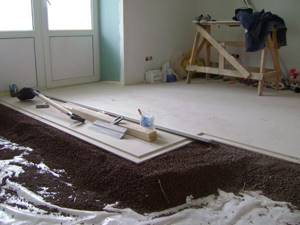
eats up a lot of space - Not suitable as insulation for regions with high humidity, long and cold winters. This material is more likely for the southern territories, where there is a drier climate and short, fairly warm winters. In order to insulate a room in harsh conditions of negative temperatures, a layer of expanded clay up to one meter is required. In such conditions, alternative materials such as mineral wool or expanded polystyrene will be most effective.
- Dusty material.

expanded clay dusty material
No. 7. Foundation insulation with expanded clay
You can also insulate the foundation with expanded clay on your own:
- the foundation is cleared of soil, a trench about 80-100 cm wide is dug;
- waterproofing the foundation with hot or cold applied bitumen mastic, or rolled roofing felt. Under the mastic it is necessary to apply a special primer, which dries in 2-3 hours;
- in places with high groundwater levels, it is necessary to arrange drainage around the house to effectively remove moisture and ensure a longer service life of expanded clay, which is susceptible to moisture. At some distance from the house, a pit is dug to a depth below the level of the foundation, geotextile is placed on the bottom, covered with crushed stone and pipes with holes are laid, pipes are covered with crushed stone, covered with the edges of geotextile and covered with sand;

- laying film over waterproofing. It should completely cover the foundation, and on the ground side it should be approximately at the drainage level. After this, expanded clay is poured in and compacted;
- installation of a blind area, for which a formwork 10-15 cm high is made along the perimeter of the building, a reinforcing mesh is laid in it and filled with concrete.
Cheap and environmentally friendly expanded clay can become reliable thermal insulation, provided that reliable waterproofing is performed.
Expanded clay grades by strength
The main criterion for assessing the suitability of a material in construction is hardness. Durable material lasts longer and ensures the safety of the building for people.
Expanded clay grades determine the properties of the product. There are ten types of granules based on bulk density. Depending on the quality class, the material is awarded a strength grade. The following table will tell you more about the classification:
The quality of the constructed building and the characteristics of the material depend on the strength.
The cost of insulating a 30 square meter ceiling with expanded clay. m
When insulating an attic with expanded clay, many homeowners want to know how much such a protective layer will cost. This approach allows you to clarify the estimate and draw conclusions about the need for additional costs or, conversely, savings and the possibility of increasing other expense items. Calculation of expanded clay concrete mixture begins with determining the volume of the base material:
- for effective heat conservation, it is desirable that the thickness of the insulating layer be at least 250 mm - the low weight of expanded clay allows you to not even strengthen the rafters for this;
- the exact thickness of the insulation is calculated based on the minimum outside temperature in winter;
- Having decided which layer of expanded clay is needed to insulate the ceiling of a building, you can find out its quantity, and then the cost.

So, with a thickness of 0.25 m and a ceiling area of 30 sq. m to create an insulating layer you will need 30 * 0.25 = 7.5 cubic meters of material. The average cost of expanded clay, depending on the size of the fraction, is 2000–2500 rubles. cube m - which means that for a 30-meter area you will have to plan on purchasing 15–19 thousand rubles. Taking into account the prices of other materials, the total amount can reach 60–70 thousand rubles, depending on the chosen vapor and waterproofing, performing the work yourself or turning to specialists.
Advice from professionals
- If there is a residential attic floor above the ceiling to be insulated, it will be necessary to provide an air gap for ventilation located between the expanded clay layer and the floor covering. It will protect you from creaking noises that will be made when walking
- A properly laid layer of expanded clay granules will not only maintain a comfortable microclimate inside the home, but will also take care of insulation from external noise.
- If a screed is installed on top of expanded clay insulation, you should give preference to a concrete screed. Popular mixtures with a self-leveling effect cannot be used. Their texture is too liquid, and therefore the mass will penetrate between the expanded clay granules and saturate them through and through, significantly increasing the consumption of material. If there is a need to create floors based on pouring, the self-leveling mixture is applied in a thin layer and only on top of the concrete coating.
Useful tips
When the ceiling opens onto a residential attic, you need to pour expanded clay so that there is a gap between it and the attic floor covering. If this is not done, the grains will constantly creak under the feet of those who walk above. But when backfilling is done correctly, expanded clay will also serve as a soundproofing material.
Sometimes it is necessary to insulate sloping attic ceilings. For this purpose, it is better to choose other types of insulation. Bulk material cannot be laid on an inclined surface: round granules will roll down. Expanded clay backfill is used only on a horizontal plane.
Self-leveling mixtures should not be used to fill expanded clay screed. The liquid mass will flow between the granules until it saturates the entire insulation, and when the thickness of the layer is large, the repair will cost a lot of money. If you need to make poured floors in the attic, you first need to lay a concrete screed, and then apply a thin layer of leveling mixture.
By pouring expanded clay to a thickness of only 10 cm, you can already save up to 70% of the heat that escapes into the atmosphere through the ceilings. The popularity of expanded clay for insulating ceilings in private wooden houses is due to its low thermal conductivity and low price
The fire safety of granules is also important.
Price and manufacturers of expanded clay
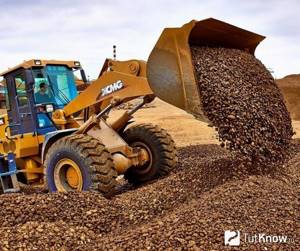
In Russia there are a large number of factories that produce expanded clay. Materials of different fractions are produced by JSC "Keramzit" (Moscow region), JSC "Stoilensky GOK" (Stary Oskol), JSC "Beskudnikovsky Plant of Construction Materials" (Moscow), JSC "Kushvinsky Expanded Clay Plant" (Sverdlovsk region), JSC "Keramzit" ( Leningrad region), Yakovlevostroydetal LLC (Belgorod region), KSM Enemsky CJSC (Republic of Adygea).
These businesses have received good reviews from consumers. The price of expanded clay is approximately the same for all manufacturers. It differs depending on the size of the granules:
- 0-5 millimeters
. Placer - from 2300 rubles per cubic meter. In bags - from 2500 rubles per cubic meter. - 5-10 millimeters
. In bulk - 1800 rubles per cubic meter. In bags - 2200 rubles. - 10-20 millimeters
. Placer - from 1300 rubles. In a bag - from 1500 rubles. - 20-40 millimeters
. Placer - from 1300 rubles per cubic meter. In bags - 1500 rubles and more.
Methods for installing insulation
Insulation from above (from the attic)
External insulation of the ceiling (in the absence of a concrete balcony) is a more preferable option, since it is simply easier to install from the attic area. Some people prefer to insulate the ceiling both from the attic and from the inside, believing that it will be better this way.
In fact, it is enough to carry out insulation only from above, everything else is unnecessary. And from a technical point of view, an additional layer of internal thermal insulation will not give anything: the level of thermal conductivity will be approximately the same. However, everything here is decided by the owner of the house. The work is carried out in several stages:
- The attic is completely cleared of all debris; its surface must be perfectly clean. It is better to use a vacuum cleaner for these purposes (not necessarily a construction one - the most ordinary one will do);
- The space is measured and insulation is purchased. For the attic, polystyrene foam is the best option. The foam sheets should not be very thin, the minimum thickness is 40 millimeters. It is also acceptable to use polystyrene, but its cost will be noticeably higher with relatively identical performance characteristics;
- The entire surface is laid with foam plastic slabs, the remaining “holes” are filled with construction foam - a fairly simple scheme;
- A screed is made on top of the foam, the maximum thickness of which is no more than 50 millimeters.
Insulation from outside
Internal ceiling insulation is a somewhat more complex task. You will have to do the following sequentially:
- make steam and hydrological insulation;
- sheathing under which thermal insulation material will need to be installed;
- install the insulation itself;
- re-vapor barrier;
- cover the ceiling with any covering material.
As an example, we can consider insulating the ceiling in a house with a wooden beam roof (such houses are most widespread in Russia). By default: climate – moderate, insulation – mineral wool.
Mineral wool for a wooden house is the best option for the simple reason that it does not interact chemically with wood. And even despite the fact that its structure itself is cellular and porous, insects certainly cannot get into it, which is very, very important for a house made of wood.
Scheme of ceiling insulation in frame private houses
You need to do the following to insulate:
- Using a stapler, you need to attach a plastic film to the beams to completely block the access of moisture. The overlap of the canvases is mandatory: it must be at least 10 centimeters.
- The sheathing is made (for sheathing with PVC panels). For such panels, small wooden slats (beams measuring 50*50 millimeters) are sufficient. They must be nailed in increments of 60 centimeters. A cut board may also work.
- The timber gap is filled with mineral wool (you can also use ecowool).
- A second layer of plastic film is laid (again, using a stapler).
- PVC panels are hemmed underneath.
Advantages and disadvantages of expanded clay
Pros:
- Good thermal conductivity of expanded clay - grade 500 has a thermal conductivity coefficient of 0.12-0.15 W/m*KWeight of expanded clay - only from 250 kg/m3 versus 2500 kg/m3 of concrete. With its help, the service life of wooden floors is extended to 50 years. Resistance to chemically aggressive environments. Environmental friendliness. Comparatively. low cost
Minuses:
You have to fill in a thick layer of expanded clay - more than 50 cm, i.e.
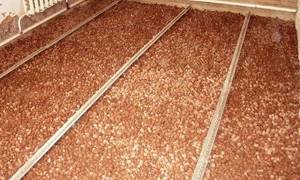
otherwise, noise and heat insulation will be poor. It is an absolutely moisture-unresistant material - therefore, expanded clay walls will be ineffective in damp rooms. Therefore, in this case it is recommended to use either a waterproofing film or not to use expanded clay at all
And finally, here are some useful tips on how to use expanded clay.
Advantages of expanded clay as insulation for walls
Why is expanded clay in such demand as insulation? Thanks to the characteristics of the heat insulator and the technology of creation, it acquires clear advantages over other materials. Here is their list:
- Affordable price. Typically, the insulation process involves significant investments. Expanded clay has a low price, which allows it to be used everywhere.
- It is possible not only to build walls from ceramic blocks, but also to use it as bulk insulation and raw material for creating a warm concrete solution.
- The insulation is made of clay, slate and other natural, environmentally friendly materials. This means that they will not in any way affect the environment and the health of those living in the house.
- Long service life. According to manufacturers, raw materials can last more than 50 years without changing their characteristics.
- The material is not afraid of external influences and the influence of chemical compounds. It will not rust, rot or be destroyed by rodents and insects.
- Easy to use. The insulation technology does not involve the use of expensive special equipment and professional tools. A beginner with basic knowledge and a set of tools will be able to cope with the job without outside help.
- Excellent sound and heat insulation performance. The material is porous and its thermal conductivity coefficient is low, namely 0.13 W/m*K.
- Minimum weight, so the insulated walls will not be heavily loaded. Weight is from 200 kg/m3. Expanded clay is easier to transport and work with.
- Its texture is loose, and the granules are small in size. Therefore, expanded clay can be used to fill cavities and spaces of any size.
- Expanded clay is not afraid of temperature fluctuations, so the thermal insulation can withstand the negative influence of the street well.
- Has excellent moisture protection.
- It has the property of allowing steam to pass through, that is, it breathes. The room will have an optimal microclimate, no condensation.
These advantages are enough to call expanded clay one of the best in its field.
Brief instructions for installing expanded clay

The technology for insulating a floor, foundation, ceiling or roof with expanded clay is generally similar. Let's look at it step by step:
- Level the base. If this is a floor, then you can pour a thin layer of cement mortar. We wait until it dries completely.
- We install a vapor barrier. This could be, for example, glassine. We seal the joints with tape.
- We install logs from wooden beams. We maintain horizontality using a building level.
- We fasten the beams with self-tapping screws in increments of 50 centimeters.
- Pour an even layer of expanded clay into the space between the joists. We make sure that the insulation is flush with the surface of the joists.
- Next, we cover the structure with waterproofing, for example, a polyethylene film.
- You can lay boards, slabs, gypsum boards, or pour screed on the finished surface.
During the process, it is allowed not to build a structure from logs, but this will make it more difficult to check the evenness and uniformity of the expanded clay layer.
Watch the video review of expanded clay:
Expanded clay is a natural, environmentally friendly insulation material that is widely used in private and industrial construction. With its help, you can carry out high-quality thermal insulation of floors, roofs, roofs, interfloor ceilings and even walls. The material has high thermal insulation qualities and is resistant to external influences.
How to lift expanded clay into the attic
The difficulty of insulation is associated with the supply of thermal insulation to the attic.
You need a lot of bulk material. Special machines are used in production. At home, they come up with various devices. Special machines in production help to quickly feed expanded clay to heights in large quantities
To ensure effective insulation, it is optimal to use expanded clay of three fractions. The granules are mixed before being placed into the attic. They do it on the ground. The presence of granules of different sizes will make it possible to obtain a dense and even layer of insulation.
Various devices are used to supply bulk materials to the attic in private construction. Most often, a block is hung on a beam. A rope with a hook is used to hook the buckets. You will need at least two assistants: one loads on the ground, and the other scatters the insulation over the ceiling. To speed up the process, you can use a block to lift not buckets, but a larger capacity container, for example, a trough.
If expanded clay is purchased packaged in bags, lifting it into the attic is simplified. There is no need to load it on the ground. You just need to pick up the bags and lift them with a block. Another device is a soft container. It is made from a piece of durable tarpaulin. Loops are made at the four corners and ropes are attached. The four free ends are tied with a knot. It looks like a hammock. At one time, a durable tarpaulin can lift up to 100 kg of pellets.
If the attic is large, it is difficult to lift huge amounts of building material by hand. Here it is optimal to use the service of a crane. However, several sheets of roofing will have to be removed, since the supply will be carried out through the roof.
How to lay vapor barrier material
- Cut the material into strips, the width of which should exceed the distance between the ceiling beams by 10 cm. The roofing material is attached to a rigid flooring. A gap should be left under the flooring for ventilation.
- If the ceiling area is larger than average, then it is better to lay the material in separate strips, overlapping them on top of each other. The overlap width should be approximately 10 cm.
- It is better to glue the roofing material in the seams with mastic.
- “Izospan” is glued with a special tape, which you must purchase in the store along with the material.
- The chimney pipe, rafter beams - all this is also “wrapped” with a vapor barrier.
- The material must be fixed one level higher than the planned height of the expanded clay backfill.
- For fastening, use a construction stapler or masking tape.
What to do next?
Quality checking
Insulating the ceiling in a wooden house with expanded clay is an option that is distinguished by its simplicity and simultaneous effectiveness. However, after all the work has been carried out, you need to make sure that this work is carried out efficiently. You need to make sure that the thermal insulation layer you have laid will perform its functions properly.
This check is quite simple and does not require any additional devices. All you need is to warm the rooms to a certain temperature. Next, close all the windows in the house and lock all the entrance doors - you must prevent heat leakage.
After this, wait a while and look at the thermometer. If the temperature in the room has changed significantly, then this is a clear signal that heat is leaking through the roof. You need to check the installed thermal insulation layer for cracks through which heat escapes.
Proper ceiling insulation is the key to your comfort
After insulating the ceiling, you can insulate the loggia, as well as other places in your private home. Despite its popularity, expanded clay is not a universal method of insulation. For example, they will not be able to insulate plastic windows.
Expanded clay and what it is capable of
What benefits does this product bring to the insulation of a residential building?
Firstly, and most importantly, expanded clay does not decompose on its own. Even after half a century, it will retain its original shape and structure.
It is also not a bait for insects, rodents, mold bacteria. So when buying expanded clay, you gain complete confidence in its quality and good service; Secondly, when choosing a construction product, we pay attention to the term of operation. So, here it is not precisely defined. Think for yourself, a stone - it is not subject to anything, over the years it only gains resistance to irritants; Since it is made from a completely natural substance - clay, there can be no talk of releasing toxic substances into the air. No allergic phenomena have been observed in people and diseases of the respiratory system, as, for example, sometimes happens with mineral wool; You won’t be afraid to leave the house for several days - expanded clay certainly won’t cause a fire. Yes, and it is not capable of self-ignition and transmitting fire to further objects; Thanks to the porous structure, we are able to spread the product in a thick layer without significantly increasing the mass. But remember, the weight of expanded clay balls is slightly higher than the weight of materials of synthetic origin.
